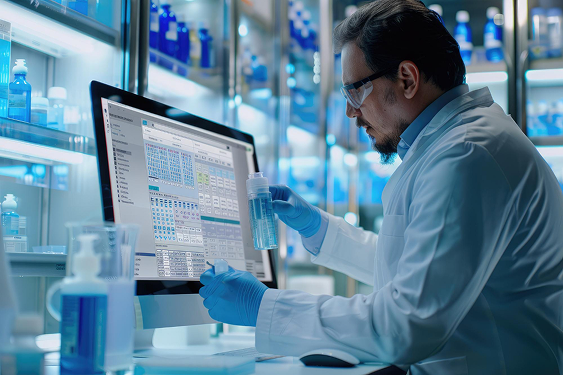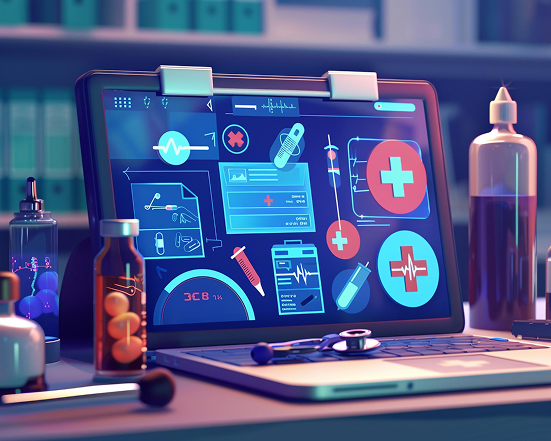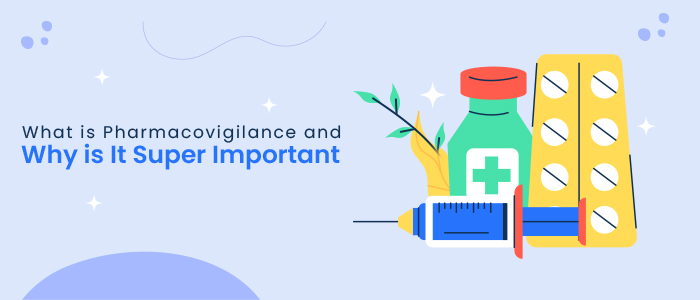Introduction to Pharmacovigilance Software: An Overview
In the dynamic landscape of the healthcare industry, ensuring the safety and efficacy of pharmaceutical products remains paramount. Pharmacovigilance, the science and activities related to the detection, assessment, understanding, and prevention of adverse effects or any other drug-related problems, plays a pivotal role in achieving this objective.
At the heart of pharmacovigilance lies sophisticated software solutions designed to streamline and enhance the monitoring process. Let’s delve into the realm of pharmacovigilance software, exploring its definition, evolution, and its significant role in the pharmaceutical industry.
Understanding Pharmacovigilance Software
Definition and Scope
- What is Pharmacovigilance Software?
Pharmacovigilance software encompasses a suite of tools and technologies aimed at facilitating the collection, analysis, and management of data pertaining to drug safety. These software solutions are tailored to meet the specific needs of pharmacovigilance professionals, offering functionalities for adverse event reporting, signal detection, risk assessment, and regulatory compliance. - Scope of Pharmacovigilance Software Applications
With the rising mandate for pharmacovigilance across the globe, there has been a significant shift towards using advanced software systems. These solutions are widely used in different stages of drug development, including pre-marketing surveillance, post-marketing surveillance, and clinical trials.
Evolution of Pharmacovigilance Software
Early Days: Manual Methods and Paper-Based Systems
The journey towards modern pharmacovigilance software can be traced back to the early 1970s when manual systems were used for reporting adverse events. With the increasing complexity of drug safety data, there was a need for more efficient and advanced tools. This led to the development of electronic databases in the 1980s and eventually, web-based systems in the 1990s.
Transition to Digital Solutions
With the advent of digital technology, pharmacovigilance software began to emerge as a more efficient alternative to manual methods. Basic digital solutions facilitated the electronic collection and storage of adverse event data, offering greater convenience and accuracy compared to paper-based systems. However, these early digital solutions were limited in functionality and lacked the advanced features of modern pharmacovigilance software.
Technological Advancements: Automation and Data Analytics
As technology continued to advance, pharmacovigilance software underwent significant improvements in functionality and capability. Automation became a key feature, streamlining processes such as adverse event reporting and data entry. Furthermore, the integration of data analytics tools enabled pharmacovigilance professionals to analyze large datasets more efficiently, identifying potential safety issues and trends with greater accuracy.
As technology continued to advance, pharmacovigilance software underwent significant improvements in functionality and capability. Automation became a key feature, streamlining processes such as adverse event reporting and data entry. Furthermore, the integration of data analytics tools enabled pharmacovigilance professionals to analyze large datasets more efficiently, identifying potential safety issues and trends with greater accuracy.
Today, pharmacovigilance software has evolved into sophisticated, cloud-based solutions with a wide range of features and capabilities. These include real-time data collection, automated signal detection, risk management workflows, integration with other healthcare systems, and more.
Is Pharmacovigilance Software Required?
A simple answer is yes, pharmacovigilance software is important for effective drug safety monitoring. With the increasing complexity and global reach of pharmaceutical products, manual methods are no longer sufficient to keep up with the volume and speed of adverse event reporting.
Regulatory Mandates:
- Regulatory authorities such as the FDA and EMA mandate the implementation of pharmacovigilance systems by pharmaceutical companies.
- Compliance with regulatory requirements necessitates the use of pharmacovigilance software for timely adverse event reporting and regulatory submissions.
Complexity of Data Management:
- The volume and complexity of adverse event data generated during clinical trials and post-marketing surveillance make manual data management impractical.
- Pharmacovigilance software provides the necessary tools to streamline data collection, analysis, and reporting, ensuring accuracy and efficiency in pharmacovigilance processes.
Risk Mitigation:
- Failure to detect and address safety issues promptly can lead to significant risks to patient health and regulatory non-compliance.
- Pharmacovigilance software facilitates early detection of adverse events, enabling proactive risk mitigation strategies to safeguard patient safety and regulatory compliance.
Enhanced Efficiency:
- Manual pharmacovigilance processes are labor-intensive and prone to errors, leading to inefficiencies and delays in adverse event reporting.
- Pharmacovigilance software automates repetitive tasks, improves data accuracy, and enhances workflow efficiency, enabling pharmacovigilance professionals to focus on critical tasks such as signal detection and risk assessment.
Role of Pharmacovigilance Software in Patient Safety
Pharmacovigilance software plays a crucial role in ensuring patient safety throughout the drug development and post-marketing process. By facilitating early detection of adverse events, automating manual processes, and enhancing efficiency, pharmacovigilance software helps to safeguard patient health and reduce risks associated with pharmaceutical products. With its ever-evolving capabilities, pharmacovigilance software continues to be a vital tool in promoting patient safety and improving drug development processes
Early Detection of Adverse Events
Pharmacovigilance software enables early detection of adverse events by automating the collection, analysis, and monitoring of safety data from various sources. This proactive approach allows healthcare professionals to identify potential safety concerns promptly and take appropriate actions to mitigate risks to patient health.
Automating Manual Processes
By automating manual processes such as adverse event reporting and data entry, pharmacovigilance software minimizes the risk of human error and ensures data accuracy. This streamlines pharmacovigilance activities, allowing pharmacovigilance professionals to focus their time and resources on critical tasks such as signal detection and risk assessment.
Promoting Continuous Improvement
Pharmacovigilance software supports continuous improvement in drug safety monitoring by providing tools for data analysis, trend identification, and risk assessment. By analyzing safety data trends over time, pharmacovigilance professionals can identify areas for improvement in drug development processes, product labeling, and risk management strategies, ultimately enhancing patient safety and the quality of healthcare delivery.
Facilitating Collaboration and Communication
Pharmacovigilance software facilitates collaboration and communication among healthcare professionals, regulatory authorities, and other stakeholders involved in drug safety monitoring. By providing centralized access to safety data and enabling secure communication channels, pharmacovigilance software promotes collaboration in safety assessment, risk management, and decision-making, ensuring a coordinated and proactive approach to patient safety.
Conclusion
With its essential role in the pharmaceutical industry, it is crucial for companies to invest in high-quality pharmacovigilance software and continually update their systems to stay compliant with regulatory requirements and industry best practices. As technology continues to advance, we can expect pharmacovigilance software to evolve as well, incorporating more sophisticated features and capabilities to further enhance its efficacy in managing drug safety data.




